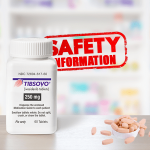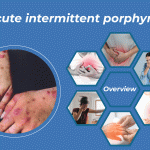Foscarnet is an organic analog of inorganic pyrophosphate that inhibits the replication of herpes viruses in vitro, including cytomegalovirus (CMV) and herpes simplex virus types 1 and 2 (HSV1 and HSV-2). Healthcare professionals recommend using Foscarnet to treat cytomegalovirus (CMV) retinitis in individuals with AIDS and treat certain types of herpes simplex virus (HSV) infection, named acyclovir-resistant mucocutaneous HSV infection, in individuals with weakened immune systems. This drug is sold under the trade name Foscavir. Foscarnet sodium is a white, crystalline powder, and it has the potential to chelate divalent metal ions, such as calcium and magnesium, to form stable coordination compounds. Foscavir injection is a sterile, isotonic aqueous solution for intravenous administration only. The solution is clear and colorless.
Dosage and Administration
- The medicine, Foscavir 24 mg/ml 250 mg, comes in a glass bottle.
- One should not administer Foscavir by rapid or bolus intravenous injection.
The administration of Foscavir is by controlled intravenous infusion, either by using a central venous line or by using a peripheral vein. The infusion rate must be 1 mg/kg/minute. One should calculate an individualized dose of Foscarnet based on body weight (mg/kg), renal function, an indication of use, and dosing frequency.
One should not exceed the recommended dosage, frequency, or infusion rates. All doses must be individualized for patients’ renal function.
Induction Treatment
Renal impairment is most likely to become clinically evident during the second week of induction therapy but may occur during Foscarnet treatment. One should monitor renal function carefully during both induction and maintenance therapy. Since Foscavir has the potential to cause renal impairment, dose adjustment based on serum creatinine is necessary.
- Seizures related to mineral and electrolyte abnormalities have been associated with Foscavir treatment.
- One must take care to infuse solutions containing Foscavir only into veins with adequate blood flow to permit rapid dilution and distribution to avoid local irritation.
- One should avoid Foscavir during pregnancy as this drug has the potential to harm the fetus.
- Loss of appetite
- Diarrhea
- Feeling or being sick
- Feeling weak or tired
- High temperature or chills
- Feeling dizzy
- Headache
- Pins and needles
- Skin rash
- Decreased white blood cells
- Changes to red blood cells






